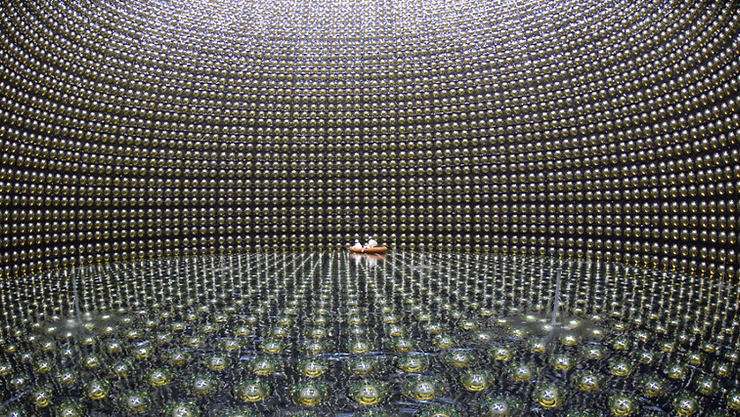By: Jonathan Shen
Scientists and Researchers in laboratories have seen ghost particles when viewing the Milky Way.
These little ghost particles are scientifically known as Neutrinos. These subatomic particles have very little mass and no electric charge. They are named “ghost particles” because of their ability to easily pass through gas, dust, and even stars without a single trace. Neutrinos with high energy zip across the cosmos carrying information from far distances, however, where these particles came from remains a mystery for many scientists.
Scientists have even discovered the speed of these super fast moving neutrinos! Some high energy neutrinos can even travel to 0.99999999999999999995 times the speed of light, equivalent to 299,792,458 meters per second! According to Neutrino Science.com.
Researchers have now found an amazing discovery, revealing the first signs of high energy neutrinos coming from within our milky way. Scientists mapped out the particles and uncovered new imagery.
The neutrino map of this Milky Way shows hints of possible light sources of where it came from. These particles could have come from the remains of supernovas, star explosions, collapsed supergiant stars or other unidentified objects. However, more research is required to find out the sources of these particles.
This new map was unveiled on June 30 in Science—Scientific report.
Kate Scholberg, physicist at Duke University in Durham, N.C., has said that, “There’s so much more to learn. It can be tremendous fun to figure out how to see the universe with neutrino eyes.”
The neutrino eyes can actually allow us to see objects that telescopes cannot detect. Some telescopes rely on visible light, others use X-rays, gamma rays, or any charged particles with rays. However, all those kinds of rays can be destroyed, absorbed or reflected through the vast amount of space before even reaching us. To make matters worse, NASA has said that, “The magnetosphere is a strong magnetic field that surrounds our planet. Acting as a shield, it deflects most solar energetic particle radiation.” This means that it’s even harder for us to capture those rays. On the other hand, neutrinos can cross huge expansions of space without being deflected, this not only gives us an advantage to receive a decent amount of them, but also tells us at the same time about very distant objects located far beyond our galaxy.
Some scientists who study neutrinos and their behavior have set up a neutrino detector in Antarctica called IceCube. This IceCube is enormous, it has 5,160 sensors arranged in a cube that’s 3,281 feet on each and every side.
In just a year, IceCube has observed more than 100,000 neutrinos a year. Some neutrinos even leave tracks in the detector. Even though scientists can detect these neutrinos, the images usually show up as bursts of light called, Cascade event. This isn’t beneficial towards researchers because it doesn’t show the origin of the neutrinos unlike the tracks can.
Astronomers now usually throw away data from Cascade events, said a physicist at Drexel University in Philadelphia, Pa. called Kurahashi Neilson. Scientists like Neilson use artificial intelligence to sort out the pictures that are worth seeing and observing and the pictures that aren’t worth studying.
Kate Scholberg says, “It’s very exciting to see the basic expectation [of Milky Way neutrinos] verified.” Astronomers will research and dive more into studying these truly fascinating particles, “Neutrinos”.











